- Forum
- categories
- Attitudes and behaviours
- Capacity development
- Knowledge management (KM) tools and approaches
- Knowledge Management in a Gates Foundation WSH portfolio - Final blog of 8: reports and plans with Gates Foundation WSH team
Knowledge Management in a Gates Foundation WSH portfolio - Final blog of 8: reports and plans with Gates Foundation WSH team
12.7k views
Re: KM in a Gates Foundation WSH portfolio - Final blog of 8: reports and plans with Gates Foundation WSH team
Identifying what causes change in organizations and attempting to identify the impact of specific projects is the kind of conundrum that keeps consultants and academics in profitable and engaging work. To borrow from Outcome Mapping language , it’s a major step to be able to identify whether those people or organizations directly connected to a project, within its’ potential sphere of influence, change their behavior and work differently in ways that could at least be linked to the activities in the project.
Donella Meadows’ seminal work, “Leverage Points – Places to Intervene in a System”, in particular her description of the role of information and feedback loops, was one of the framing ideas for a review workshop of the KM project in the Building Demand for Sanitation (BDS) portfolio. Meadows’ work explores systems, their complexity, and the enormous effort and time required to achieve lasting change . Meadows’ work highlights the importance of power and paradigms, reinforcing the central importance of leadership, a point we’ve made consistently in this series of blogs.
The WSH team of the Bill & Melinda Gates Foundation organized the two-day workshop in September 2015. Its’ purpose was to review 18 months of KM initiatives by the BDS team, as well as Foundation-wide KM experiences, and consider activities for the WSH team as a whole that would lead to stronger networks among foundation and grantees, improve availability and access to specific knowledge, and strengthen the organizational culture, improving the flow of knowledge.
The whole WSH team was involved in the workshop. The BDS KM team shared summary findings from a grantee survey, giving responses on elements of the BDS KM program they valued and whether or how it had affected their work. This graphic below illustrates the relative valued add of program activities, according to grantees.
And although 18 months is a short time in which to achieve the more fundamental changes in behavior that are the basis of sustainable change, there were clear indications that grantees believed the BDS KM activities were helping them integrate more effective KM into their work. For example, from the pre-program survey in 2014 we identified grantee KM priorities and in general, in the concluding survey, grantees rated the project’s impact positively.
Mainstreaming KM into the Rhythm of Business
Everyone in the WSH team had ideas and experiences to share, so much so that when it came to prioritize proposals, a senior member of the team responded that he felt almost promiscuous because there was so much that turned him on. It’s hard to summarize such a free-flowing, well-informed and thoughtful conversation but the remarkable graphic facilitation of Nancy White at least conveys some of the richness.
The main theme that emerged was the necessity of integrating KM in the normal ‘Rhythm of Business’ (RoB). There was a consensus that KM has to be ‘mainstreamed’, not seen as something discrete, made up of specific periodic activities. The most fundamental recommendation was that the WSH Director would ask WSH team members to put KM activities into individual goals on basis of common team goals to be developed by management, based on a menu of Key Performance Indicators (KPI) to choose from. This would be supported by including KM in the job description for the then-about-to-be-appointed Deputy Director for Strategy, Planning and Management.
The team agreed also to determine how best to incorporate KM into the grant management cycle, and include it as a standard item on regular ‘Feedback to Action’ meetings. For example, two members of the team planned a pilot of a peer-assist format for part of an upcoming meeting, and they agreed to communicate lessons learned back at the next meeting. Finally, the team planned to institute regular meta-analysis of grant results, one or two times per year, which would feed into the planning process.
Active curation of information and widening access to resources behind paywalls was another theme. The team agreed to put resources towards a service or function that replicated the ‘Curated Updates’ experiment run throughout the BDS KM project . There was also a commitment to exploring how grantees could benefit from Foundation access to publications.
As ever, the longer-term impact of the workshop, and the KM project more generally, will probably be more influenced by the ‘normalization‘ of the concepts through the commitment of so much time to discussion, and the personal engagement of staff in the issue, very much led from the top. The WSH team have committed to reviewing their progress on improving KM, so expect some more blogs in due course.
Meanwhile, what about long-term behavior change in organizations that has demonstrably improved knowledge flows, learning and information management: do you have any examples or ideas?
Attachments:
-
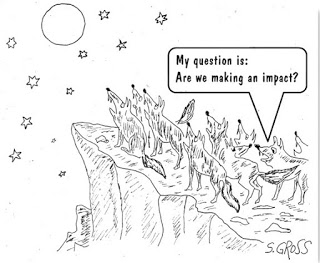 wolvesimpact3.jpg
(Filesize: 26KB)
wolvesimpact3.jpg
(Filesize: 26KB)
-
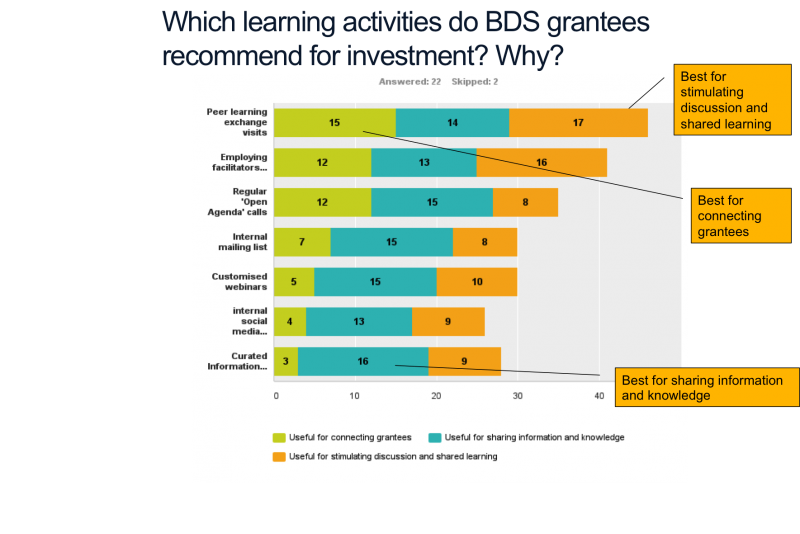 bestinvest...iews.png
(Filesize: 190KB)
bestinvest...iews.png
(Filesize: 190KB)
-
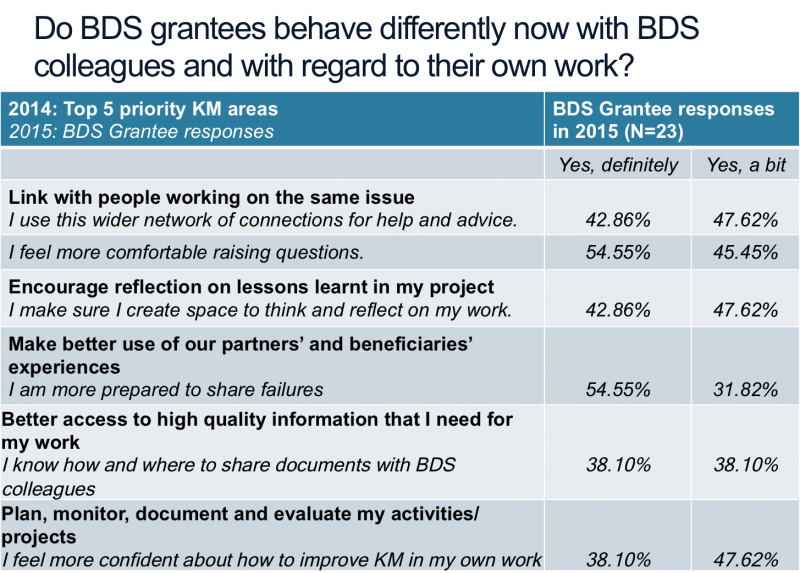 impactongrantees.png
(Filesize: 451KB)
impactongrantees.png
(Filesize: 451KB)
-
 WP_2015100...rama.jpg
(Filesize: 22KB)
WP_2015100...rama.jpg
(Filesize: 22KB)
Please Log in to join the conversation.
You need to login to replyRe: Learning about Learning in a Gates Foundation WSH portfolio
It all seems so obvious
Pippa Scott blogged about a conversation with IRC’s Erick Baetings who was convinced he had learnt a lot during the week-long 2015 convening of the Building Demand for Sanitation (BDS) portfolio of grants. But when, with a colleague, he tried to write down what they had learnt – it all seemed rather obvious: ‘we need to think about smarter subsidies‘; ‘we need to work outside our silos.’ Erick said that it took them some time to really work through some of the statements to filter out the real-take home messages ( which form an excellent blog here ).
Nancy White has played a ‘critical friend’ role with us on the BDS Knowledge Management (KM) project. Nancy and I have worked in KM for more years than we care to (or can) remember. So when we spent some time reflecting what we have learned about learning during the 18 months, a lot of what came up seemed so obvious. But then, we too rarely write down what we know we know, which often means that learning isn’t passed on. That insight came from a shocking moment at the Hanoi convening when it became clear that the same organization had repeated the same errors in different countries over several years, a story told in a previous blog .
The challenges that KM is trying to address don’t change, which is one of the reasons why suggested solutions often sound so obvious: they have probably been tried before, with varying degrees of success. So in this blog we are reflecting on what we have learnt from BDS KM around two themes, identifying what stands out as things that might help improve KM in all our work.
Listening not hearing, observing not seeing
What shakes us out of our comfort zones, makes us challenge our assumptions, makes us recognize that what is in front of us isn’t explained by our current intellectual frameworks? In other words, when and how do we learn?
There are endless quotes on the importance of failure to learning – because failure publicly demonstrates that our assumptions and plans were wrong or inaccurate, and the bigger the failure the harder it is to learn and adjust. Disasters and emergencies have similar, distressing impact on our learning. Merizow suggests transformational learning only happens because of such ‘disorienting dilemmas ’.
We can’t wait for failures or disasters to trigger our learning yet often busyness means we miss the obvious and important. The story of how Menstrual Hygiene Management (MHM) was taken up as an issue by WaterAid GB provides a stark illustration. MHM has emerged as a key concern on WASH agendas in the last 10 years, as the scale, complexity and seriousness of the problems attendant on inadequate menstrual hygiene became clear. Mahon and Fernandes in their seminal 2010 paper, “Menstrual hygiene in South Asia” recount how it started:
“In January 2007, during a project visit to a village in Sehore district of Madhya Pradesh State, an adolescent girl told WaterAid staff that her mother did not allow her to use the household’s toilet during menstruation, because she is impure. During another visit to a village in Sheopur district, a woman casually mentioned in discussion that during menstruation she has used the same set of cloths for the last four years. These two small incidents brought to light another dimension of hygiene, and WaterAid realised that this is an area which has to be addressed”
Enormous kudos to WaterAid for picking up the issue and building momentum in the sector. But what is striking to me as a newcomer to the WASH sector, a man with a daughter, is that such a serious issue emerged so recently. Had the stories told by the two women to WaterAid project officers never been told before, or was it simply that the implications and impact of similar stories hadn’t been noticed? What must we do to ensure we hear and see what is in front of us? And the challenge is greater within projects and organizations, which quickly develop a way of seeing and doing that tends to be reinforced by internal processes driven by the need to meet deadlines, targets or budgets.
Of course sanitation has the powerful model of CLTS illustrating how people can be brought to a different way of seeing. And although far less dramatic, consultants, reviewers and evaluators can similarly hold up a mirror to an organisation or project. A similar engagement with outsiders comes from exchange and field visits too, as we discussed in an earlier blog . Both the visitors and the ‘subjects’ challenge each other, stimulate reflection and discussion. Visits to new places and contexts also caters for the random, chaotic, free flowing, emergent nature of many learning processes. Visits trigger experiences and memories that can take participants conceptually to a different point, and are especially powerful if groups or teams are involved.
But what about internal processes? Somehow teams and projects have to bring the outsider, the ‘other’ into their conversations and reviews, whether literally or through how they approach learning. Someone has to take on the outsider role, be a ‘critical friend’, challenge norms, assumptions and, ‘the way we do things around here’.
It’s obvious that leaders play a crucial role. For example, in the MHM case, the two WaterAId field workers were listened to by their manager, who agreed to take the issue up and invest. In the same way, other managers championed and invested in MHM research and programing within the organization. In the same way, managers and leaders have can profile and model learning, as Jan Willem Rosenboom has done in BDS KM and as did the Directors of the WSH team in the Bill & Melinda Gates Foundation in setting up a two day discussion in Seattle to consider how the BDS KM experiment could inform their plans (the outcome of which we’ll be describing in the next, and final, blog in this series).
Part of that modeling is being open about not knowing, admitting ignorance. By asking genuine questions and sharing their own mistakes and failures leaders can help other people unfreeze, as this great example from a USAID project illustrates .
Nancy described this as “othering.” She suggested that an element of othering is the experience and power closeness or distance between the person sharing a learning and the listener. The closer people are in experience and/or power, the easier it is to share those daily, little things that often matter. The risk is low. Trust is probably high. Reputation is not an issue. Sharing with someone with more power or experience (like a boss, expert or funder), while requiring more courage (or trust), may shine a broader light on an issue that the practitioner may have thought was unremarkable, but the expert discerned its larger importance. So this idea that we need to share knowledge with different kinds of others emerged in our observations. It can also affect mentoring, another knowledge sharing vector.
We also observed it is essential to be explicit and intentional about reflective, learning processes. There are myriad formal processes, for example, evaluations and donor reviews. But in many cases a simpler, basic approach is required in standard meetings, mirroring what happens when disorienting dilemmas or emergencies cause us to stop; to think, “what did I actually learn”; “what’s new”; “what do I know more about now” or “how can I apply this new knowledge”? We have to watch for and catch ourselves and each other in our learning, and be mindful of the larger learning journey of which such smaller exchanges and events are a part. It’s that process we included in the learning exchange program, through our skype calls and email- learning-journals.
But to make that happen, space needs to be set aside. Anywhere we have worked people have complained about not having enough time to stop, think and record their learning.
Of course people do make time informally: we have almost as many stories of the informal ways that people make time to talk, and hence to share and learn – whether it’s the Friday afternoon kick-back, with beer or strong, sweet tea; the long, dusty drive back in the land-cruiser; or the small hours overnight on planes; or the bars or clubs in most CGIAR centers that serve the same crucial social and knowledge exchange function as, for example, the livestock fairs in Zimbabwe that Charles Dhewa and his team are recording . But to take that learning from individual and small group up to the level of teams, projects and organizations requires planning and commitment of resources to regular, formal Learning Reviews, which focus on observation and reflection, adaptation and change.
However, as a respondent noted during a recent organizational KM review, being asked to identify what has been learned at the end of a period tends to generate disconnected, random items, that hover between the operationally detailed and the strategic. Some organizations or program units are addressing this by requiring strategic units to develop learning plans or agendas. Catholic Relief Services, for example, recently instituted procedures requiring country programs to identify annual learning agendas. The aim is to develop a light-touch frame for the year, areas where the teams expect to know more about, questions that are being explored.
Learning how to learn, learning how to connect.
Pippa Scott highlighted this issue in her blogs post the 2015 BDS convening. “Do people know how to learn in their daily work? Is it part of their commonly used skills set? Is there a need to build capacity around learning and sharing within the community? And do projects and teams take account of people’s learning preferences and styles?
Learning how to learn can mean on a very practical level, ensuring and supporting community members to know how to use webinar/blog or other online technology. On a more conceptual level, learning how to learn can be to ensure community members know how to slow down and take the time to observe, reflect and learn as in the 'focused conversation' examples from the 2015 BDS convening . This can also be incorporated into learning events, such as reviews and workshops, where organizers schedule a time at the start of the session to set some ground rules and even learn or practice communication skills, before jumping into the content. For example, during the 2015 convening one group realized that participants needed to tell stories rather than simply throw out all their information at each other. It came to light that one of the participants ( Joep Verhagen, WSP ) had followed storytelling training. The facilitation team liked this and tweaked a session the next day to include the skill of telling stories rather than simply talking at to each other.
Once we had introduced storytelling as a communication technique, and throughout the rest of the workshop, Pippa Scott noticed that participants would prompt each other into better communication, by asking ‘what is the punchline (of your story)?‘ ‘What do I need to learn from this?’ It was fascinating and especially useful in teasing the golden nuggets of learning from the sheer volume of information. It is often also a more pleasurable experience and people may listen better.
What works for you? What’s your best example of a project, team or organization that took learning seriously, tracked it, and ensured it fed through into program adaptation and development?
Attachments:
-
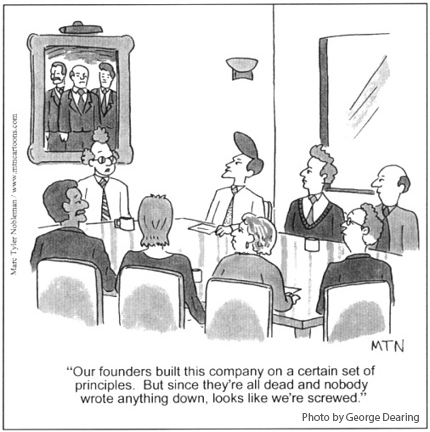 Cartoon-KM1.png
(Filesize: 79KB)
Cartoon-KM1.png
(Filesize: 79KB)
-
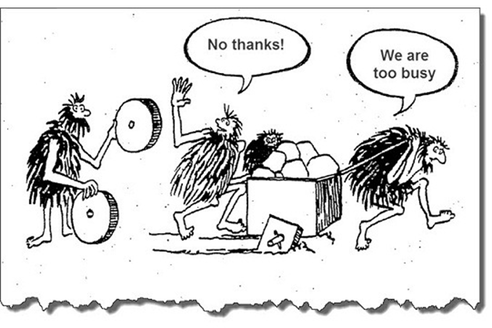 kmcartoon2.png
(Filesize: 59KB)
kmcartoon2.png
(Filesize: 59KB)
Please Log in to join the conversation.
You need to login to replyRe: KM in a Gates Foundation WSH portfolio - blogs 1 to 6: connections, leaders, collections & exchanges
(Albert Enstein)
So think of any large, fun event you’ve ever been part of organizing. You know the ingredients: a good mix of people; good things to eat and drink; some activities – often but not always based around music; a space to gather, preferably one that has lots of different areas, and corners; and you – the hosts, the MC, the facilitators, who watch what’s going on, connecting people who have something in common, who start things moving, mark time and schedule events. And you know when it’s working by the buzz, a mix of different conversations, and the way that people are mixing fluidly.
For managing online communication replace the food and drink with content that people want to consume and the metaphor transfers almost completely.
The ‘connect’ work-stream was central to the Knowledge Management (KM) project we ran during 2014 and 2015 for the Building Demand for Sanitation (BDS) portfolio of the Bill and Melinda Gates Foundation WSH grants. The aims were to:
- strengthen grantees sense of collective identity, of belonging to a group who could provide support and inspiration;
- provide ‘safe’ places to encourage conversation and experiments;
- deepen conversations, encouraging double or triple loop learning.
Hosting, curating and facilitating – content focused community building
The best party hosts combine social skills with insider knowledge, and enjoy a laugh!. They know who and, often more importantly, who not to introduce to each other. We were lucky to engage Pippa Scott to lead the Connect work-stream, for one day per week over one year. Pippa is a WASH specialist with experience and expertise in facilitating online communities of practice – a rare combination - and has all the social skills of a party host. So Pippa was able to add the role of curator to that of facilitator. As well as seeding and nurturing conversations and connecting different conversation spaces Pippa was able to identify and comment on key content areas, know who to engage on any particular subject, and generate meaningful, specialist content for members of the portfolio to share and discuss. Much of the material in this blog comes from Pippa’s reflective pieces about BDS KM published internally during the project.
Gathering conversations
Targeted and deliberate curation and facilitation contributed significantly to improving peer-to-peer connections within the grantees and fostering a community spirit to enable better knowledge sharing and learning. An indicator is how conversations evolved over time, with face to face meetings spinning off exchanges, which in turn were picked up at the following convening. The BDS community collected a number of conversations, notably:
- The Demand-Supply-Finance triangle
- Behaviour change, community norms and habit formation
- Working at scale – crossing the valley of death from ‘pilot’ to ‘scale’
- Learning about learning
- The (changing) role of the Gates Foundation
Multiple spaces and interfaces for exchanges
There is no one size fits all when it comes to learning. Everybody learns in different ways and has different learning styles and skills. Some relish a written debate (on email or a forum for example) where others will need more direct or personal engagement. Some are happy to debate in a public space whereas others are not. So it’s crucial to ensure the conversations take place across a number of platforms where each conversation creates an interface or opportunity for the community’s connections to be reinforced.
As described in an earlier blog, face to face, voice and email are the communication preferences for BDS grantees –which our experience elsewhere confirms is typical of the Development sector. Our challenge was to link and build connections between the face-to-face events, such as the the BDS annual convenings and the round of WASH conferences, workshops and events in which grantees otherwise crossed over. So we used a mix of online platforms, illustrated below:
- An email list as the primary communication channel (using Dgroups.org);
- A private blogging space (using wordpress.com) to help the community protect their learning space, and where we shared other information about projects and grantees
- Social media, particularly Twitter.com, to link with the small but growing band of digitally-active grantees
- Webinars, both private to the portfolio and public, via Susana.org.
Unsurprisingly, the email list was the most heavily used. But there was also moderate and growing use of the private space, particularly the blogs, as the conversations described above rippled across the platforms. A key web indicator is average length of time users spend on a page. The vast majority of web pages score under 10 or 20 seconds, so the two-minute average for the BDS sites was encouraging. The blogs also had a lower bounce rate (people who leave the site after visiting only one page).
Activities and Learning events
The currency of online communication is content and events. So we planned a series of activities including targeted questions, reflections and reports from exchange visits, and webinars following up from the face-to-face events. We anticipated that each would attract overlapping but different audiences. We maintained deliberately a low-level of regular communication, with the curated updates service described in an earlier post as a steady drip of targeted content to maintain and grow interest.
We wanted to identify the hottest topics for grantees, what people are grappling with daily, what issues had the greatest potential for exchange. The open agenda calls initiated by Jan Willem Rosenboom , the BDS portfolio lead, were described in the second blog in this series . Their purpose was to provide a forum to connect outside of the annual face to face meetings and share sector updates, not just issues relating directly to the BDS portfolio. The evolution of conversations within and around those calls illustrates the role of small connect investments. The first round of calls was rather functional, where several organizations voiced an area of interest where they could offer or would appreciated some peer support or insights from others experience. The calls were evidently beneficial to grantees and sparked several one-to-one offline conversations for peer-to-peer exchange immediately after.
The topics raised during this first round of calls (financing vs. demand, learning about learning and monitoring platforms) informed the early conversations within the BDS KM activities and these broad themes have since flourished (having been nurtured with support of a series of KM learning events and activities) into an informed and quality discourse. The content of the second round call was more focused on sharing learning, with grantees identifying possible synergies of their work (as opposed to general assistance requests) with a deeper quality dialogue than the first round of calls 7 months earlier. In general, the conversations amongst BDS grantees became much more focused and nuanced in their discourse over the program year. Pippa Scott’s view is that it is through allowing these conversations to flow, through the community, picking up different aspects but maintaining a steady and focused flow through different platforms and gaining insights from different people (professionals, practitioners, academics) that such a rich “collection of conversations” emerged within the BDS network in a relatively short space of time.
Consumable content
Following the 2015 face to face Sanitation Partners meeting in Hanoi, the reflections of Gates Foundation staff and the BDS KM team were that the annual BDS face-to-face convenings really do provide a forum for state of the art discourse to be voiced and shared. Where others in the sector may be waking up to potential synergies of programs, the BDS Sanitation Partners forum actively brought partners working at the forefront of rural sanitation together to exchange and learn from each other.
The challenge for the BDS KM team was to try and maintain some focus and quality to these conversations outside the face-to-face events. As such, the BDS KM team, responding to the feedback of participants, attempted to channel and foster the conversations through a series of online learning events and resources. The most notable of which were: blogs following up from Hanoi, thematic webinars on issues raised by BDS grantees (recorded and shared within BDSKM.net), the learning exchange visits described in the previous blog (shared with grantees on email and in summary blogs on BDSKM.net) and in certain cases one to one exchanges of BDS KM staff with BDS grantees.
The right people
The potential for useful exchange and learning within such a diverse group as BDS grantees was a key driver for the program, especially since our surveys showed that grantees under-valued themselves as a source of knowledge and learning, even though the portfolio brings together many of the leading organizations in Sanitation, including acknowledged thought leaders.
Does the BDS buzz represent a positive return on investment?
Too much communication becomes noise, too little and the level of communication between face-to-face events drops to near zero, as was the case in BDS before the KM project. As we’ve described above, we aimed to provide just-enough communication, initiate activities that would attract grantees because they were interesting and relevant, while weaving content and conversation between different channels and face-to-face meetings. And, within the narrow bounds of this 18 month experimental project, our review showed that there was indeed some change in behavior, as illustrated below.
The overall level of investment in the connect activities, including both Pippa Scott’s one day per week and contributions from other BDS KM team members, was approx. 30% of an FTE. We would argue the level of engagement and changes in behavior among grantees represents a positive return.
Do you have other examples of similar targeted KM investments in programs bringing a range of organizations together in a relatively loose association such as in the BDS?
Attachments:
-
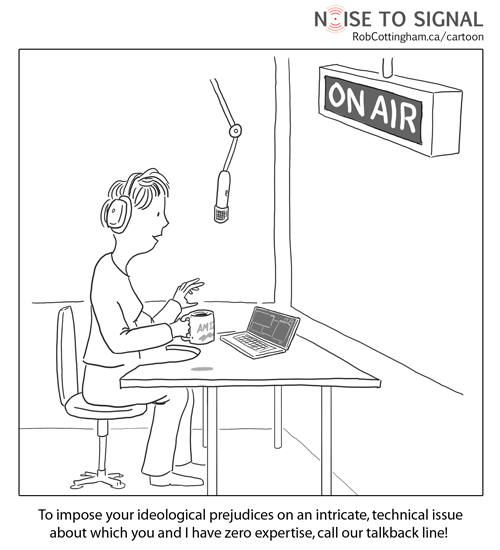 2010.04.17...dio_.png
(Filesize: 35KB)
2010.04.17...dio_.png
(Filesize: 35KB)
-
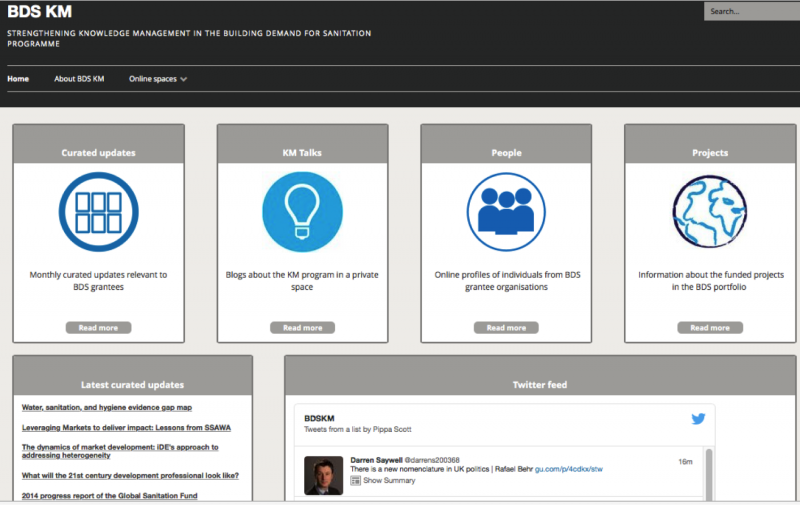 bdskmdotnet.png
(Filesize: 162KB)
bdskmdotnet.png
(Filesize: 162KB)
-
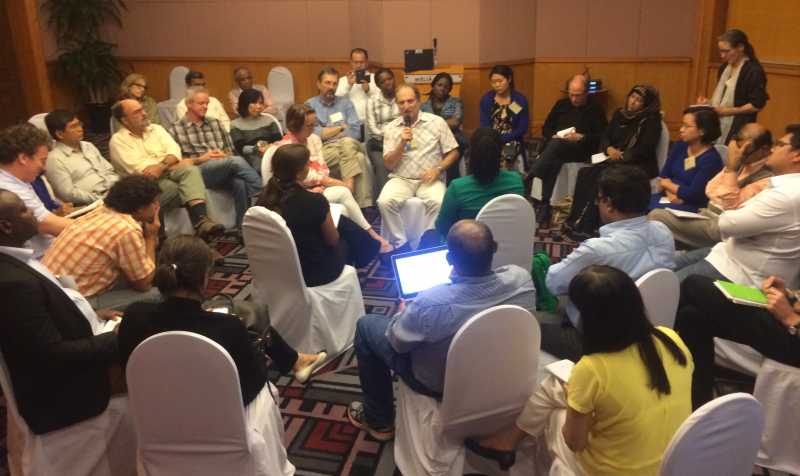 Samoancircle.jpg
(Filesize: 39KB)
Samoancircle.jpg
(Filesize: 39KB)
-
 changeinco...erns.png
(Filesize: 106KB)
changeinco...erns.png
(Filesize: 106KB)
Please Log in to join the conversation.
You need to login to reply“Knowledge can only be volunteered, it cannot be conscripted
We only know what we know when we need to know it
The way we know things is not the way we report we know things
We always know more than we can say, and we always say more than we can write down”
‘The essence of the Knowledge Management (KM) proposition was that better outputs in terms of products and learning are generated by strengthening learning and knowledge sharing amongst grantees, which can be influenced by low level investment in:
- Strengthening links, and increasing conversations between grantees
- Focusing on learning and reflection processes
- Making specialist content more accessible
In the next two blogs in this series on the Knowledge Management (KM) activities developed in support of a Bill & Melinda Gates Foundation WSH portfolio of grants we focus on ‘connections’ and ‘learning’ activities. This blog describes how we integrated reflection and communication into a series of learning exchange visits between grantees. Dave Snowden is an academic and KM practitioner (not to be confused with Edward Snowden, the former CIA contractor!). The quotes above from Snowden, the KM practitioner, frame well the complexity of the learning process and why exchange visits have a special place in the KM toolkit.
Investing in what works
Like a well-used family recipe, exchange visits keep on delivering. From farmer field schools to government level exchanges, Development organisations continue to invest in exchanges because they work. “I’d had emails about the new products but it was only when I visited the site that I recognised the significance of what they were doing”, reported an experienced grantee. And “staff visiting … ask questions and force us to think”, said a project team member.
Learning is emergent, chaotic, subversive, individual as well as social, and people learn what they want and need to learn, which is (only) sometimes what the designer of the process would like them to be learning. Face to face conversations at meetings, convenings, exchange visits and study tours provide that necessarily random stimulus, the wide spectrum of experience that encourages reflection and fresh thinking. To paraphrase Snowden, we learn when we arrive at a point where our current models don’t match what we are seeing and we are required to investigate and reflect. And whatever digital enthusiasts like me say about the value, fun and power of social media and online conversations, people consistently rate face-to-face exchanges much more positively. For example, to choose just one from the constantly refreshed, rich collection of documented experience, the Challenge Program for Water and Food implemented a very wide range of KM style learning and Research for Development tools throughout the 10 year-long project. In their end of project surveying, “the three tools that received a positive rating of over 80%, i.e. rated as useful learning mechanism or very effective mechanism, were Study Tours, E-mails, and Annual Reflection meetings”
Development Tourism or learning journeys?
There’s lots of common-sensical advice within the literature on how to maximise the benefit from the investment in exchange visits. So our process for the Building Demand for Sanitation portfolio (BDS) of the Gates Foundation emphasised the importance of clear learning aims, at both a personal, team and WSH grant portfolio level - one of our selection criteria was the likely relevance of the content to other grantees. Our particular interest was in combining the connecting and learning aims listed above, intensifying reflection, learning and sharing. So we borrowed from reflective journaling and action learning processes as we constructed the format for the exchanges. We therefore required applicants to choose how they would communicate and engage with us in the KM team and the wider portfolio before, during and after the visits. The BDS KM mailing list (constructed on Dgroups.org) and the BDS blog were the two main communication channels, while any grantee who already used other channels like Twitter or Facebook were encouraged to comment as the visits progressed. As well as generating shareable content we hoped that the reflective journaling would help participants consolidate their learning, as summarising and communicating with others often does.
We ring-fenced finance for the learning exchange visits, waiting until the latter part of the project until connections strengthened between grantees and opportunities for mutual learning became clearer. We advertised the opportunity among grantees, stressing the two-tier nature of the exchanges:
- A content exchange, where specialists would engage with other specialists on specific WSH issues and challenges. This is the meat and drink of most exchange visits. And although our specific interest was in learning and communication we recognised that most learning would take place internally to the participants, and much would surface much later, as people realised ‘what they knew when they needed to know it’. Participants were required to produce short outputs, visual or written, to share insights and reflections about the specialist content with other grantees.
- A learning journey, where the participants would be reflecting as they travelled – and we all know the best ideas often come when staring through windows on a trip – having the kind of conversations based on direct observation and contact stakeholders that are the backbone of adaptive project management. And they would be recording those processes in some kind of learning journal. For example, one exchange participant tweeted regularly, another emailed us daily, another group agreed to a Skype conversation mid-visit. Pippa Scott used the content to construct blogs and emails for sharing with the portfolio. We also followed up with participants at the end of the exchange, discussing reactions, identifying specific pieces of learning and how that might impact the program.
Figure 2 East Meets West Skype from India with KM team during their visit
The communication in turn triggered some responses from grantees, some in the public spaces and some directly to the participants. Final products included a report, Local Women Centered Institution for Sustainable Rural Sanitation and Hygiene? A Learning Discussion’; a reflective paper on, Developing Markets for Sanitation and a video narrative of a visit focusing on low – cost sanitation product manufacture.
Taking it wider
Maintaining the two levels of exchanges, content and learning, captured in a variety of communication products, of course, opens possibilities for the learning to ripple out beyond the narrow context from which it originates. For example, in Tanzania, Ghana and Burkina Faso the Climate Change, Agriculture and Food Security Programme (CCAFS) ran a project called ‘Farms of the Future’. CCAFS wanted to explore study exchanges between farmers organized around climate modelling (a climate analogue tool). Participatory video was used in the process to support farmer (and wider stakeholder) learning – the participants filmed the visit themselves and fed back to their wider community on return. The CCAFS teams were already working on participatory action research in the host communities so there were opportunities to support follow up after the visitors returned home. They videos and supporting documentation are publicly available
Other helpful resources:
- The World Bank’s, ‘ The Art of Knowledge Exchange is a particularly useful resource.
- John Roux wrote a couple of handbooks on Learning Journeys for the Water Information Network in South Africa (WINSA) in 2007 – one for organisers and facilitators and a summary version for sponsors, hosts and participants – the latter is on the WINSA website
Attachments:
-
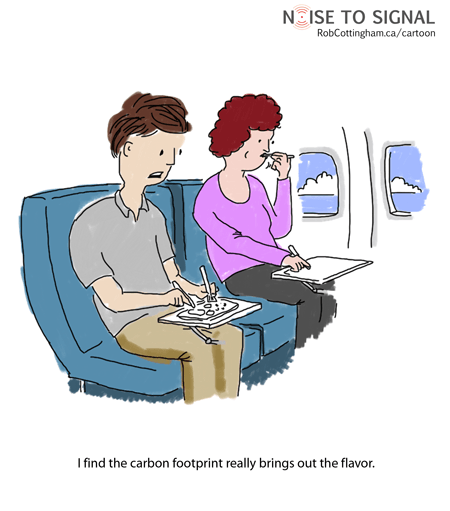 2010.06.05...rint.png
(Filesize: 43KB)
2010.06.05...rint.png
(Filesize: 43KB)
-
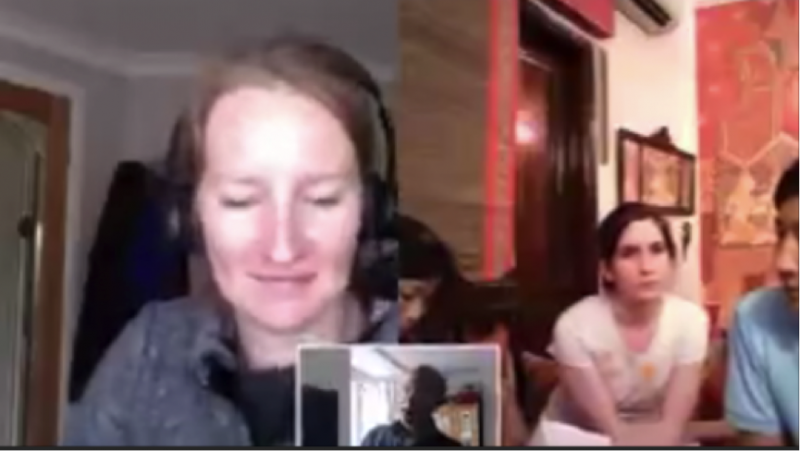 emwlearning.png
(Filesize: 408KB)
emwlearning.png
(Filesize: 408KB)
Please Log in to join the conversation.
You need to login to replyRe: Bigger databases or personal, curated collections - Mendeley and BDS KM
And on the topic of personal collections, of course that's why Dropbox is so popular in International organisations - often frustratingly so for IT departments. The instant synchronisation of files between personal machines and the Dropbox cloud is wonderfully efficient. And individuals can keep track of their own and team libraries. What Mendeley adds is the ability to categorise and search
Cheers
Pete
Please Log in to join the conversation.
You need to login to reply- Elisabeth
-
- User is blocked
- Freelance consultant since 2012
Less- Posts: 3372
- Karma: 54
- Likes received: 932
Re: Bigger databases or personal, curated collections - Mendeley and BDS KM
Thanks for your blog posts which I am finding very informative and easy to read! I am hoping to see others provide comments and feedback on them as well.
The table above on WASH resources is very useful. Another one to add there might be the one by CAWST (containing only their own resources).
And I am missing the library of www.sswm.info (www.sswm.info/library)?
Also the ones by IRC and WEDC could be included.
Just one small point of correction: it is not true that the SuSanA library contains mainly GIZ and SEI documents.
The SuSanA library (www.susana.org/en/resources/library) currently contains around 2100 documents. If I put in the search field GIZ, this brings up 220 documents, so roughly 10% only.
Putting SEI in the search field doesn't work because the search is not case sensitive and will bring up publications that have "sei" in their title or summary. But there will be far fewer SEI publications than GIZ publications; so the majority of publications in the SuSanA library is neither by GIZ nor by SEI.
As you mentioned the filtering function for WSSCC, you could also mention the filtering functions available in the SuSanA library (although that is perhaps too much detail)?
As for keeping off-line collections of publications, personally I am not doing that (as I am hardly ever away from the internet for long), but I am not the prime target group for this question. I can imagine it being important for people who work "in the field" a lot.
Cheers,
Elisabeth
Freelance consultant on environmental and climate projects
Please Log in to join the conversation.
You need to login to replyRe: Bigger databases or personal, curated collections - Mendeley and BDS KM
Where is the knowledge we have lost in information?”
That TS Elliot quote used to be trotted out a lot in the early days of computers, as people worried about the impact of digital technology on learning and collaboration. It seems more relevant now as we struggle to keep our heads above water in the swollen rivers of information and communication swirling around us. We’ve moved very quickly from a situation where information was scarce to one where we have a surplus, a glut of information.
Part of the original brief for the Building Demand for Sanitation (BDS) Knowledge Management (K)M project was to, "improve knowledge and information management of, and access to the Bill and Melinda Gates Foundation’s WSH information (by)planning and designing a system to organize and annotate WSH resources and to make these resources readily available to grantees as well as to the public”. However, two key changes were made to the proposal following consultations with the grantees:
- Grantees were clear they didn’t need or want another mega-depository: the key issue for them was overload, an insupportable signal to noise ratio. They wanted to be able to know about new stuff (which led to the Curated Updates work described in the previous post) and be able to access the most useful as and when they needed it.
- While the Gates Foundation WSH material is important, grantees also wanted material from elsewhere to be included.
On and offline – Agriknowledge and TEEAL lead the field
The first task was to review other information management libraries to assess their range of content and capabilities. Internally, the Gates Foundation’s Agriculture program emerged as a leader in this area. Agriculture has established two library systems – an online digital library (“ Agriknowledge ”), and an offline library designed for use in developing country contexts (The Essential Electronic Agricultural Library or TEEAL ). The online Agriknowledge library, built and managed by Cornell University, is primarily devoted to Gates Foundation-generated content, though they have recently started acquiring documents from Gates Foundation partners’ libraries as well. Agriknowledge can be searched by theme, country, language, and type of document. Currently there are about 600 documents in the repository. It is still evolving, and its managers anticipate instituting major platform changes in the future in terms of its administrative interface and other features.
TEEAL, in contrast, was developed to bring a wide range of agricultural and related science information to users who lack fast and reliable internet access. The library itself is a sealed hard drive unit which can be accessed from a subscriber’s computer. The ‘basic collection’ includes content from more than 275 research journals from 1993 to the present, and is updated (by flash drive) every year.
Mutiplying repositories
The Gates Foundation WSH program’s Transformative Technologies portfolio is currently using SuSanA as a place to store and share its' own and partner research outputs. Currently there appear to be around 100 documents in this online platform, which is searchable by key words and sortable by title, publication year, and partner organization. These documents also can be accessed from the main SuSanA library, and it is possible to link to related discussions in the SuSanA forums area. In 2014 the main SuSanA library had over 1,700 documents. SuSanA continues to update various parts of its website, with funding support from the Gates Foundation.
Other prominent WASH sector organizations maintain online libraries, generally accessed through navigation from their home page. Examples include those of the Water Supply and Sanitation Collaborative Council ( WSSCC ), the World Bank Water and Sanitation Program ( WSP ), UNICEF , WHO , the International Water and Sanitation Centre ( IRC ), Akvopedia , the Community Led Total Sanitation Knowledge Hub , the CLTS Foundation , the USAID-supported WASHplus project , and others (mainly regionally or country-focused).
Each of these existing resource libraries has strengths and weaknesses. WSP’s site offers only content from its own projects (though it has over 1000 documents). WSSCC’s library has a wide range of content, and it is relatively easy to search its 1,800+ documents. SuSanA and CLTS Knowledge Hub have ‘deep’ content focused on a narrower range of subjects. Finding information in the WSH sector therefore may require visiting a number of sites and dealing with a range of different search platforms (summarised in the table below).
2 As a Wiki, this may be a group process
3 Institutional Repository for Information Sharing.
A searchable Dropbox
Grantees had strongly urged that WSH resource databases should follow two key principles.
Firstly, they should provide offline access to WSH resources, for two reasons:
- There are still large areas and numbers of people who work in development who do not have reliable, affordable Internet access, both at home and at work.
- Development people travel, go to workshops and visit projects: having access to a portable, searchable offline repository of relevant material is a key resource. Dropbox is a widely used solution but its contents can only be searched by filename.
Feldman’s work had shown the importance of classifying or tagging the material to enable rapid searching and sorting. We wanted to find ways to make the repository a living document, one with which grantees could interact, able to rate, edit, tag (classify) and add to the collection.
Mendeley.com
Jaap Pels led the investigation into platforms suitable for the trial information repository. Based on this research and input from our Advisory Group members, the Mendeley reference manager/social network rose to the top of the list.
Mendeley is a desktop and web program for collaborating online, managing and sharing research papers. It combines:
- Mendeley Desktop, a PDF and a reference management application (cross-platform on personal computers as well as phones and tablets)
- Mendeley Web, an online social network for researchers.
- It can be used online or offline (desktop version can automatically synch with the online library);
- It's accessible from pads and smart phones;
- It has Public or Private Groups. This feature means that a specific sub-set of ‘high value materials’ can uploaded and shared with a group of users, either public or only for an invited set of users, such as BDS grantees, as shown below. In practice this then becomes a shared library, as well as a platform for developing and maintaining social contacts
- Meta-data from uploaded documents is automatically captured (although it generally requires some editing);
- It's easily searchable by user-created tags, key words or other attributes;
- Users also can access and search the entire Mendeley document database[4].
- There are limited social functions, enabling people to find others with similar interests and interact
Attachments:
-
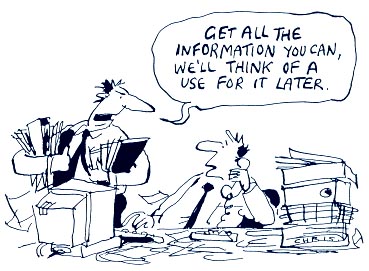 S2Ninforma...toon.jpg
(Filesize: 34KB)
S2Ninforma...toon.jpg
(Filesize: 34KB)
-
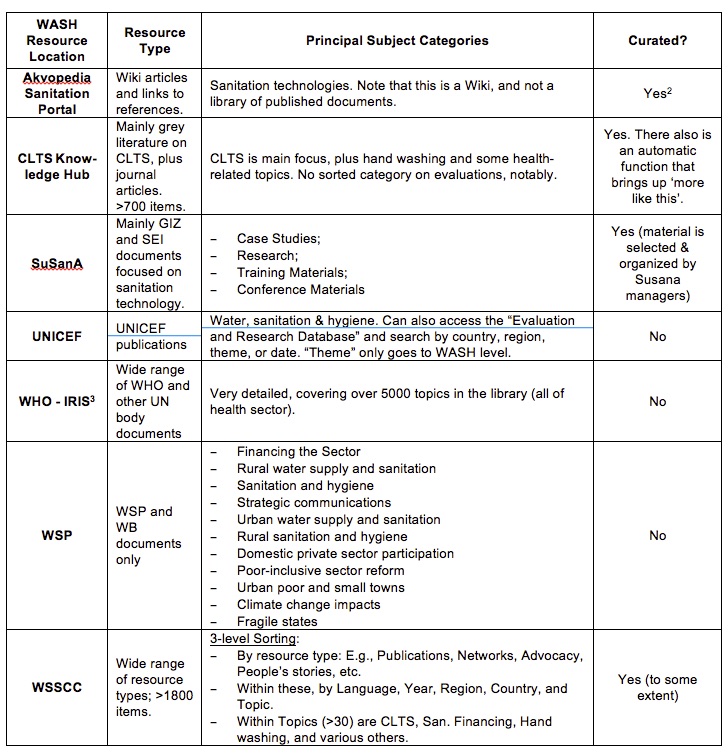 repositori...ared.jpg
(Filesize: 194KB)
repositori...ared.jpg
(Filesize: 194KB)
-
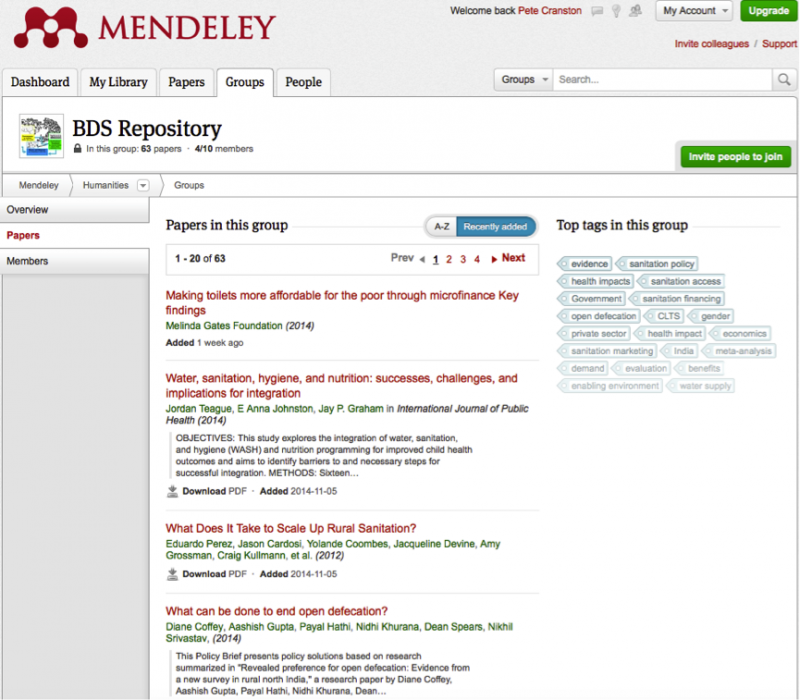 mendeleypic1.png
(Filesize: 452KB)
mendeleypic1.png
(Filesize: 452KB)
-
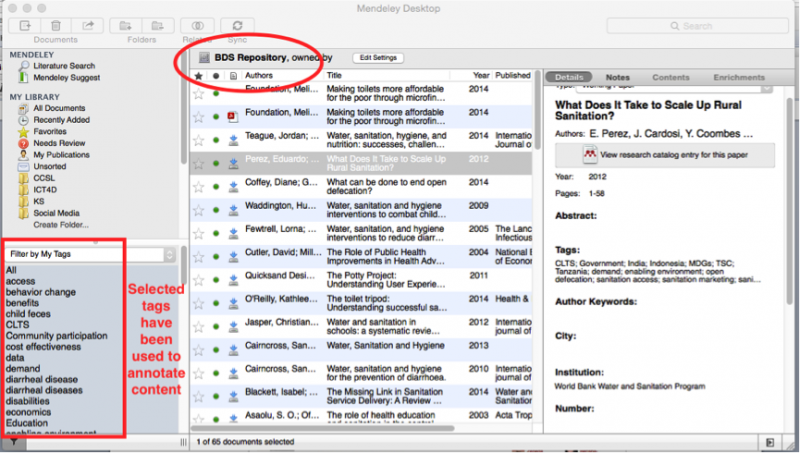 mendeleypic2.png
(Filesize: 403KB)
mendeleypic2.png
(Filesize: 403KB)
Please Log in to join the conversation.
You need to login to replyRe: KM in WSH - curated updates: increasing signal, reducing noise
FOMO – waving or drowning?
We’re drowning in a ‘tsunami of data’ said a group of WSH grantees at the 2014 Building Demand for Sanitation (BDS) convening. Time was when email was a welcome game-changer and people were in awe of the almost limitless information seeking and sharing opportunities afforded by the Web. But now the relentless and constantly increasing flow of articles, reports, research briefs, books, newsletters that compile all the above for ‘convenience’ threatens to overwhelm anyone trying to keep up with their specialist subject. And “Fear of Missing Out” (FOMO) - fear of missing trends and key new material is a major contributor to the anxiety caused by being unable to swim easily through the floods of information.
And it's curious to be writing in SuSanA about finding ways to locate information and keep updated. SuSanA has an excellent, huge and growing collection of WASH information but the question posed in this third blog in the series describing the BDS Knowledge Management (KM) work over the past two years is whether we need more and bigger information repositories, or whether we should be investing in curators instead (what we used to call librarians!)
The model
In 2013 Ned Wells started circulating a short monthly update of digital marketing insights and clips that had struck him as useful and interesting. There were five items, in each update, with one short sentence explaining why Ned valued the piece. It took a couple of minutes to scan and because we respect Ned as an expert in what he does there were generally one or two items worthy of a quick click through, and occasional gems that merited a longer read, and a share. Simple, practical and anxiety reducing – ‘at least I’m keeping up with what people are saying, and the clips from Ned, who knows what he does, show that I am still in touch”.
BDS Curated Updates
To address the vision statement in the second clip above (from another group in the 2014 BDS convening), we borrowed the key elements of Ned’s idea: regular, short updates curated by specialists within a bounded subject domain, selected for a specific audience. Economy and efficiency were also key criteria in the design: we were testing whether a useful service could be delivered on minimal resources so that it would be a sustainable option, something that could be taken on by a larger organisation. Our target was that delivering the updates should take two or three days per month each, i.e, approx. 20% of a full-time post. We aimed also to mirror the level of interest demonstrated by Ned Well’s service, described above, recognising that a significant part of the value of such a service is addressing the FOMO. So we aimed for a 20% – 25% success rate in terms of interest.
We were very lucky to engage two excellent curators, respected, assiduous WSH specialists - Shankar Narayanan and Jonny Crocker - who were well connected to movements in WSH debates and publications. Pier Andrea Pirani has already blogged about our technology choices (a Wordpress blog and Mailchimp for the newsletters ) and also about how we measured the progress of the trial service . The curators took on the responsibility of entering updates into the blog platform and the process of sending the newsletter was partially automated, requiring in the end only a couple of hours.
This activity was planned around a “publish, review, adapt, publish” cycle for 12 months. We tweaked and adapted the process, the newsletter and the content after each issue. The number of people signing on to receive the updates more than tripled over the 12 months all by word of mouth. We reviewed the output to-date with grantees at the January 2015 BDS convening. Following feedback, including from the curators about the difficulty of identifying genuinely new or outstanding content when there were disappointingly few recommendations from grantees and others on the list, we reduced the number to four updates a month and the curators sought to cluster the updates thematically.
As shown above, the open rate (% of subscribers that open newsletter) was always above MailChimp’s ‘industry average’ (NfP organisations), and once we had resolved a bug in Mailchimp’s statistics, we could see that the click rate (% of successfully delivered campaigns that registered at least one click) was consistent. The most significant finding is that the open and click rates remained constant even while the number of recipients consistently grew, pretty much in line with our plans.
There were generally positive responses from the grantees in an end-of-programme survey:
- a large majority considered that, “on balance, the Curated Updates were very or a bit useful’ in their work
- 30% considered that approx. four days per month constituted ‘extremely good value for money, while 59% considered it as ‘quite good’ value
And as is shown in the responses above, the updates rippled out across grantee’s own networks.
Less is more – boosting the signal to noise ratio
Speaking as someone whose digital archives go back over 15 years, who hoards web-links (using delicious.com), and whose digital filing structure is so rich and complex that it is generally quicker to search across the directory tree than attempt to navigate it, I recognise the compulsion to gather material that passes across an e-desk. And there’s clearly a role for organisations in collecting and sharing as much material as they can gather, for sharing with their own networks, for reference and for archiving. However, the demand from this small but important group of WSH specialists was to experiment with ways to amplify the signal to noise ratio of information. The case presented by the Curated Updates experiment is that a small investment in curation can deliver a significant return and deliver value to a targeted, bounded set of Development specialists – from practitioners through to those at the heights of policy and academia.
What's your view of this experiment? Do you think the results are worth the investment?
How do you navigate the information floods?
Attachments:
-
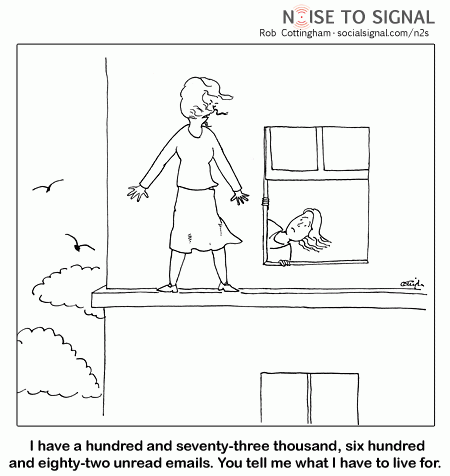 2009-05-23-ledge.gif
(Filesize: 22KB)
2009-05-23-ledge.gif
(Filesize: 22KB)
-
 originsofCU.jpg
(Filesize: 18KB)
originsofCU.jpg
(Filesize: 18KB)
-
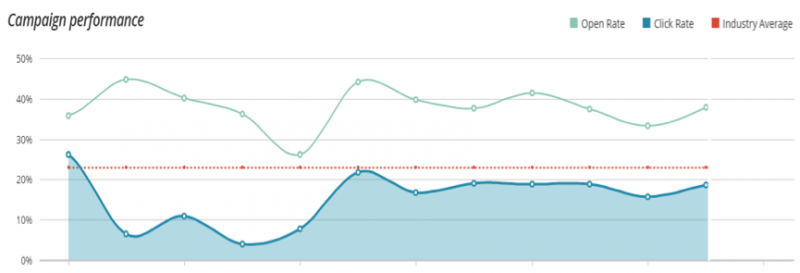 CUstats.png
(Filesize: 120KB)
CUstats.png
(Filesize: 120KB)
-
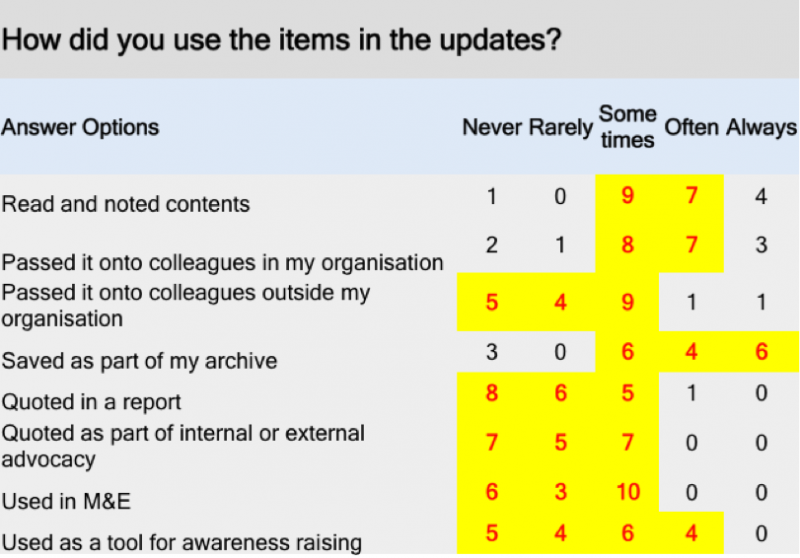 CUstats2.png
(Filesize: 341KB)
CUstats2.png
(Filesize: 341KB)
Please Log in to join the conversation.
You need to login to replyRe: KM in a Gates Foundation WSH portfolio - blog 2 - leadership and a learning culture
The good news is that it doesn’t take extra time for leaders to influence the culture of an organisation or project so that it is more supportive of learning and knowledge sharing. It’s more about being than doing, which is just as well, since leaders are always (almost) the busiest people in an organisation or project, the ones with the impossible diaries and the crippling email back-logs. It’s how leaders relate to their teams and colleagues that sets a culture. A leader who constantly asks questions, who reflects openly and publicly on their successes and challenges, who uses meeting times for collective reflection and conversations as much as operational agendas – wouldn’t we all want one of those!
The bad news is that it’s hard to write about leadership, Knowledge Management (KM) and culture without banalities and clichés. There is very little that is new: the principles of how leaders can support learning and knowledge sharing show through any study, whether it’s our recent KM review work with WaterAid or this recent piece about a USAID funded project in Uganda . But we’ve some good, practical examples of small changes that influenced behaviour from the Bill & Melinda Gates Foundation Building Demand for Sanitation (BDS)1 KM project. Below we discuss project and portfolio identity, describe how we addressed the issue of a learning culture and two ideas that were tested.
A band of projects on one funding line is not an identity!
We were surprised by our initial grantee survey finding that showed how little grantees saw or used each other as sources of information. But of course a Gates Foundation portfolio like the BDS isn’t an organisation, hardly even a coherent programme. It is rather a collection of funded initiatives addressing core development research questions. It is similar to many large collections of funded projects collected together by donors. These collections may be named by the funder and have a coherence in terms of budgets and timescales from the donor point of view. However, from the perspective of the recipient organisations, the funding is a contribution to their own programmes, derived from their own strategies. So there is not necessarily a sense of identity within the grantees, nor a sense that they are a community of practice within they can learn and share knowledge.
Communities of practice take time to develop, generally far longer than the 18 months of the BDS KM project. So from the outset we were clear that we would need to construct a set of activities that could prompt reflection and exchange within the grantees, support those over time and track what happened. And we were mindful of the fact that people talk about what matters to them. Another truism, but necessary to re-state since KM programs sometimes assume that people will talk about KM and how to improve it with the same enthusiasm as KM geeks. Our interest was in bringing to bear on WSH issues the specific collection of experience and capacity represented by the collection of BDS grantees in ways that would enable them to collectively explore and advance their common agenda, defined in the overall BDS framework. In later blogs we’ll describe the network animation, connection activities and ‘learning events’ that formed the core of this effort.
The best of all possible worlds
How the donor representative plays their leadership role in collections of funded programmes defines whether the collection coheres or remains a series of parallel activities. Our BDS KM plans included looking at how the BDS portfolio operated and how internal portfolio management processes could support improved KM. In the first post in this series we described activities within the Gates Foundation aimed at improving knowledge flows (KF). The KF team developed a draft of a Future State document listing indicators that would be present within an organisational culture in which Knowledge flowed easily and productively. We used this draft document as the way to structure conversations with Jan Willem Rosenboom, the Senior Project Officer responsible for the BDS portfolio, about internal processes and the role that he might be able to play in supporting the KM effort. The target was to identify areas where changes in practice and behaviour could have impact, knowing that suggestions for extra work would be very difficult to fit into a packed schedule. Jan Willem was an active sponsor of the KM initiative and keen to experiment. Two ideas emerged immediately that are described below and were implemented over the next 15 months. Neither was radical, or involved significant extra time but both sign-posted intention and set a different tone for how people might behave with each other within the portfolio, focusing on learning and exchange rather than simply on the operational business.
Future State indicator: staff members can quickly and easily tap into the experience and expertise of the foundation-wide network.
Future state indicator: learning and knowledge sharing activities are integrated into the regular rhythm of work
From functional to conversational
It’s hard to describe the impact of these two components in isolation since they were integrated into a group of communication and connection activities that will be covered in a later blog. 2 Pippa Scott, a WASH specialist who also has experience and skills in online facilitation – a rare and valuable combination - led the connection component of BDS KM. Pippa’s comments on the differences between the two sets of open agenda calls provide one indicator of the changes in behaviour and expectations about learning that accompanied these activities.
Learning leaders
BDS convenings have been always been structured to maximise opportunities for learning and knowledge sharing. A key element is the commitment to field visits, which provide a springboard for in-depth conversations both during and after the visits, as well as providing unstructured time – those long minivan journeys for people to simply get to know one another. The 2015 BDS convening in Hanoi was designed to also provide opportunities for grantees to go deeper, get beyond straightforward knowledge and experience exchanges into second and third loop learning . Again, Jan Willem led from the front, as described in a previous blog , setting the tone for the event, and supporting actively the range of facilitation approaches we used, such as the Samoan Circles and Fishbowl methods described in yet another blog .
"The way we do things around here"
And so to a learning culture, another topic writing about which has destroyed forests. The ‘way we do things’ quote is attributed to Bower (writing in 1966) and is still a useful shorthand for describing organisational culture. By leading in the way that he has, Jan Willem has defined questioning, sharing, provoking, critically reflecting as ‘the way BDS wants to do things’. And as we shall describe in later blogs, if grantee approval of the KM activities is any guide, then the BDS culture, loose as it is, has been changed, set differently by clear and determined leadership.
What examples do you have of inspiring and effective leadership?
FOOTNOTES
1. The BDS portfolio has now merged with another to make up the Measurement, Evaluation and Dissemination, for Scale (MEDS) initiative, whose first annual convening takes place this September.
2. Note that we have been blogging throughout the BDS KM project, but mainly on the platform we set up for internal BDS conversation that was kept as invitation-only to encourage freer conversations than might be possible in more public spaces.
Attachments:
-
 wsp-cartoo...2013.jpg
(Filesize: 78KB)
wsp-cartoo...2013.jpg
(Filesize: 78KB)
-
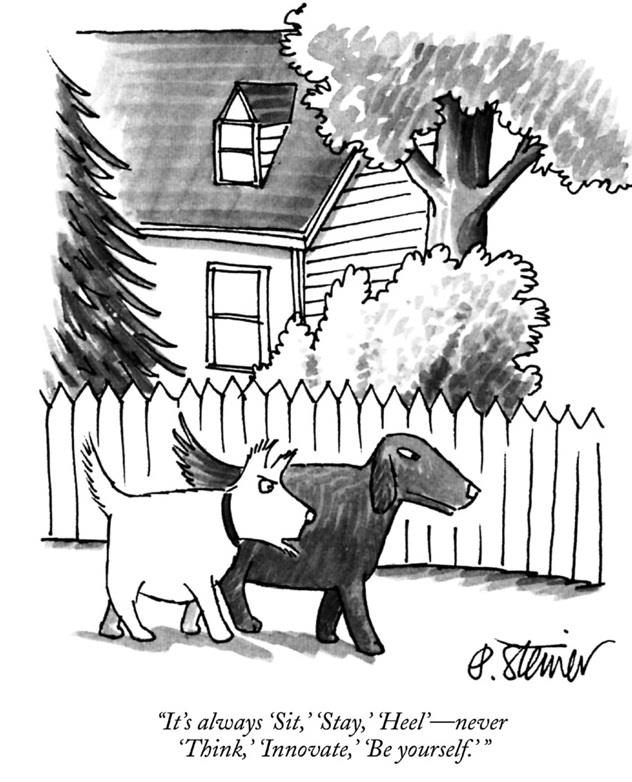 dogsandleaders.jpg
(Filesize: 75KB)
dogsandleaders.jpg
(Filesize: 75KB)
Please Log in to join the conversation.
You need to login to replyKnowledge Management in a Gates Foundation WSH portfolio - Final blog of 8: reports and plans with Gates Foundation WSH team
Learning is something we all do personally, more or less effectively. It’s when we work in groups, in organisations, in programmes and projects that we fail at learning and sharing what we know more often than we succeed. And it’s a problem that has been written about for as long as you care to look back, in Business, in Government, in International Development.
Learning comes home to Seattle
The Bill & Melinda Gates Foundation WSH team recently met to review the progress and outcomes of an 18-month long project that explored how to improve Knowledge Management (KM) within the Building Demand for Sanitation (BDS) portfolio of grants. At the end of a two day process the team committed themselves to a series of actions aimed at improving the way that they do their work of listening, discussing, reflecting on and sharing what they and their grantees are learning from the large and strategic investments made by the Gates Foundation.
This is the first in a series of eight blogs describing the process leading to that meeting in Seattle. It's posted here to share our progress and findings, and because we'd like to hear about any similar projects. Of course any and all comments or questions are welcome too.
In the final blog we’ll share some of the outcomes of the Seattle WSH team meeting in September 2015. But it’s important to understand first the context, the goals set for the KM project, the activities and outputs and, importantly, what grantees said about the process. In this first blog we introduce the BDS portfolio, the conception of KM that underpinned the work, the process by which the KM project was designed and the different work streams. What we did in those workstreams, what happened and what people said about the activities and their impact will be described in later blogs
BDS
The Gates Foundation is committed to helping establish sanitation services that work for everyone, especially the poorest. The BDS portfolio was one of five distinct initiatives. It was focused on stimulating demand for improved sanitation in Africa and Asia, where the vast majority of those who lack toilets are living 1. The core BDS approach included stimulating demand for sanitation within communities, as well as working to improve the evidence base on effective practices to better influence the policy and regulatory environment, and to help improve the effectiveness of local governments and implementing organizations. The initiative worked with a range of partners, including government and private providers, focusing on evidence-based programming, community-level demand creation, development of appropriate technology and service options, etc. The goal was to scale up implementation of effective rural sanitation approaches in order to end open defecation, as well as to help ensure sanitation facilities are safe, hygienic, and used by all – especially the poorest
KM is….?
The term Knowledge Management has always been contested: “you can't manage knowledge — nobody can. What you can do is to manage the environment in which knowledge can be created, discovered, captured, shared, distilled, validated, transferred, adopted, adapted and applied”2 . This quote from the venerable Chris Collinson gives a sense of the range of activities that need to be considered in thinking about KM. (Note: Collinson is now working with DfID on improving its KM, following the Amber/Red 2014 assessment of it’s organisational learning by the UK’s Independent Commission for Aid Impact (ICAI) in 2014. DfID is not alone: interest in and a determination to improve Knowledge Management is sadly something that ebbs and flows in a regular cycle in most large organisations).
For the BDS KM work we focused on four activities that would be included in most definitions of KM:
• Information management: the collection and management of material from one or more sources and making that material accessible to and usable by one or more audiences;
• Knowledge sharing: a set of practices that enables people to share what they know with others in the application of their work;
• Learning processes: both individual and collective or social, focusing less on the “sending” and more on the “receiving”, particularly the processes of sense making, understanding, and being able to act upon the information available.
• Communication: in the sense of a meaningful exchange, as a foundational competence for the interactions that are at the center of learning, sharing and managing knowledge
Context is all - participative design
Rather than take a pre-formed template or follow one of the countless KM models we set up a process to engage grantees in a collective project design process. A preparatory survey confirmed that reliable, affordable Internet access remains a problem for those outside larger, well-resourced organisations for many people across the globe.
We queried grantees’ information and communication seeking and sharing habits. The responses confirmed that the explosion in social and other digital media has had little impact on development actors’ behaviour. For example:
• To gather information, grantees asked a colleague first (50%); then either research online or ask other WASH colleagues (outside BDS programme), then contact other Gates grantees, then go to specialist online communities
And grantee preference for sharing ideas was, in order:
• email individuals they know working in the same area
• share ideas face to face
• contribute at technical workshops/conferences
• phone individuals they know to talk through the idea
• publish an article in a specialist magazine or paper in a journal
• send an email into a specialist online community or discussion group
During the 2014 BDS annual convening we ran three sessions exploring in more detail the kind of activities that grantees thought would be useful in their contexts. Two primary themes emerged
Connections not collections:
Ask for a definition of KM and sadly often people will fall back on describing the process of recording and documenting ‘knowledge’, storing these ‘content objects’ in databases and disseminating documents and other products. If anyone had any doubts as to the limitations of this definition they’ve only to look at the results of the World Bank's study of how few of it’s fabulously rich databases of policy document are downloaded . And almost none of the grantees prioritised databases or content repositories in their recommendations. Rather they confirmed the importance of strengthening ties and connecting with each other. From a standard list of KM activities and functions grantees prioritised:
Increasing the signal to noise ratio:
Once upon a time the introduction of email and other Internet services to Development organisations was seen as a wonderful advance. Today people battle, complaining loudly, with unmanageable inboxes. Meanwhile, the range of information sources continues to multiply exponentially. So grantees were keen that the project explore ways to address the problem.
Knowledge Flows in the Gates Foundation
Having synthesised the inception workshop output we discussed the ideas and recommendations with the WSH team in Seattle, seeking also to learn about integrate the project with related Gates Foundation initiatives. The Knowledge Flow initiative was a set of activities investigating and aiming to improve the flow of knowledge within the Gates Foundation. Their simple and elegant conceptualisation of the work provided a framework that mapped onto our emerging proposals (illustrated below) and, we hoped, would enable us to develop our work in alignment with thinking in the Gates Foundation.
If you have comments or questions about the content of this blog, please post them into this thread. In the following blogs we will discuss the main activity streams in turn, turning next to a discussion about KM leadership.
FOOTNOTES
1. The BDS portfolio has now merged with another to make up the Measurement, Evaluation and Dissemination, for Scale (MEDS) initiative, whose first annual convening takes place this September.
2. Chris Collison and Geoff Parcell, Learning to Fly - Practical Knowledge Management from Leading and Learning Organizations (2005), Chapter 2, pages 24-25
Attachments:
-
 2007-07-13...ming.gif
(Filesize: 29KB)
2007-07-13...ming.gif
(Filesize: 29KB)
-
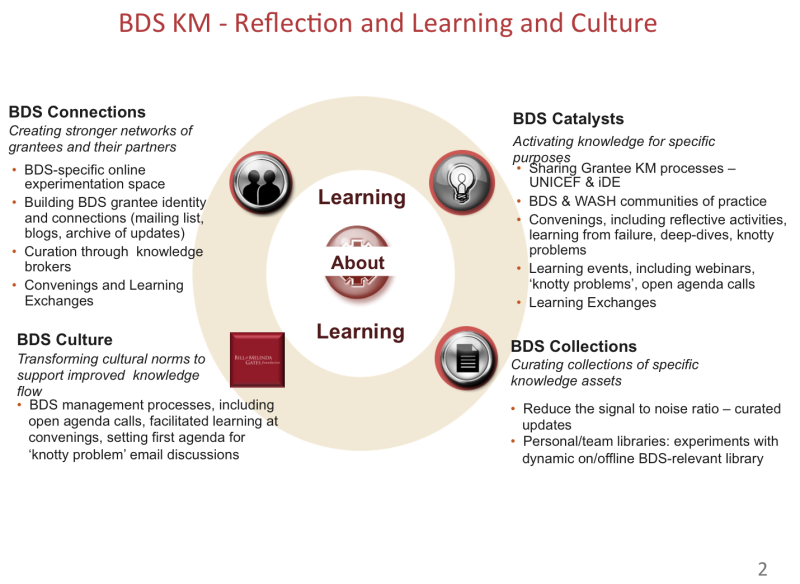 BDSKMKF.png
(Filesize: 249KB)
BDSKMKF.png
(Filesize: 249KB)
-
 signaltonoise.jpg
(Filesize: 20KB)
signaltonoise.jpg
(Filesize: 20KB)
Please Log in to join the conversation.
You need to login to reply- Forum
- categories
- Attitudes and behaviours
- Capacity development
- Knowledge management (KM) tools and approaches
- Knowledge Management in a Gates Foundation WSH portfolio - Final blog of 8: reports and plans with Gates Foundation WSH team







